Type Marian apparition | ||
 | ||
Holy See approval Pope Pius XIIPope John Paul II Shrine Sanctuary of Our Lady of Fátima, Cova da Iria, Fátima, Portugal | ||
Sanctuary of our lady of f tima portugal hayley westenra amazing grace live with lyrics
Our Lady of Fátima (Portuguese: Nossa Senhora de Fátima, formally known as Our Lady of the Holy Rosary of Fátima Nossa Senhora do Rosário de Fátima [ˈnɔsɐ sɨˈɲoɾɐ dɨ ˈfatimɐ] [ˈnɔsɐ sĩˈȷ̃ɔɾɐ dʒi ˈfatʃimɐ]), is a Roman Catholic title of the Blessed Virgin Mary based on the famed Marian apparitions reported in 1917 by three shepherd children at the Cova da Iria, in Fátima, Portugal. The three little children were Lúcia Santos and her cousins Jacinta and Francisco Marto.
Contents
- Sanctuary of our lady of f tima portugal hayley westenra amazing grace live with lyrics
- Prelude
- Marian apparitions
- Miracle of the Sun
- Later years of the children
- Pilgrimage
- Official position of the Catholic Church
- Political aspects
- Memoirs
- Three Secrets of Ftima
- First secret
- Second secret
- Consecration of Russia
- Third Secret
- Controversy around the Third Secret
- Ftima prayers and reparations
- Popes and Ftima
- Sainthood
- Other images of Our Lady of Ftima
- References

On 13 May 1946, Pope Pius XII granted a canonical coronation to the venerated image enshrined at the Chapel of the Apparitions of Fátima via his apostolic legate, Cardinal Benedetto Aloisi Masella. On 11 November 1954, the same Pontiff later raised the Sanctuary of Fátima to the status of Minor Basilica by his Papal brief Lucer Superna.
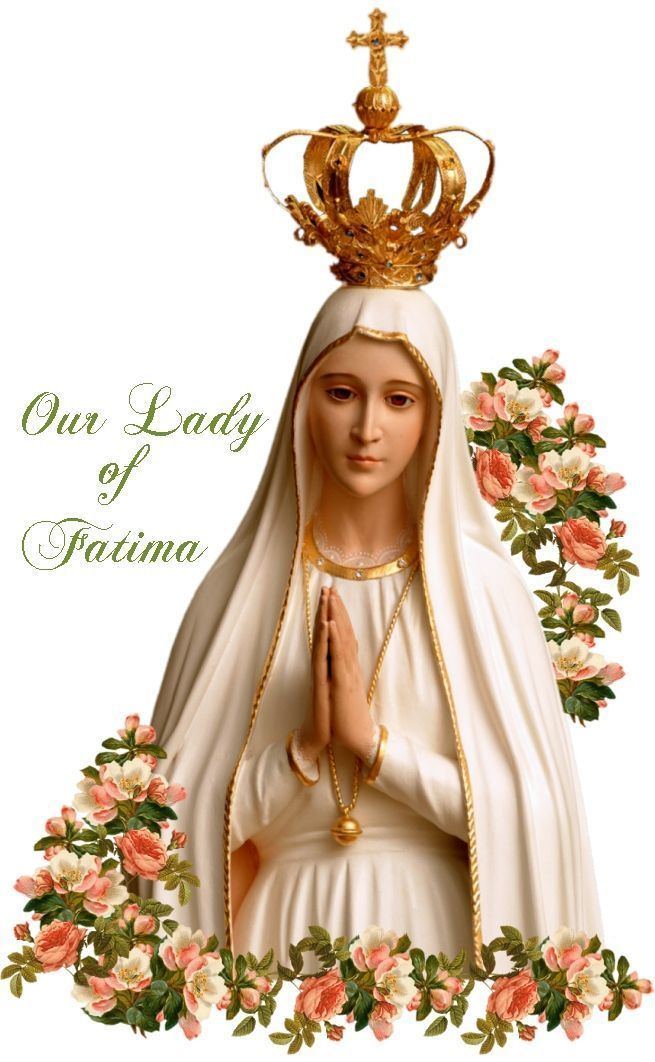
The reported apparitions at Fátima were officially declared worthy of belief by the Catholic Church, which commemorates the event on the same date. The published memoirs of Lúcia Santos' in the 1930s revealed two secrets that she claimed came from the Virgin while the third secret was to be revealed by the Catholic Church in 1960. The controversial events at Fátima gained fame due partly to elements of the secrets, prophecy and eschatological revelations allegedly related to the Second World War and possibly more global wars in the future, particularly the Virgin's alleged request for the Consecration of Russia to the Immaculate Heart of Mary.
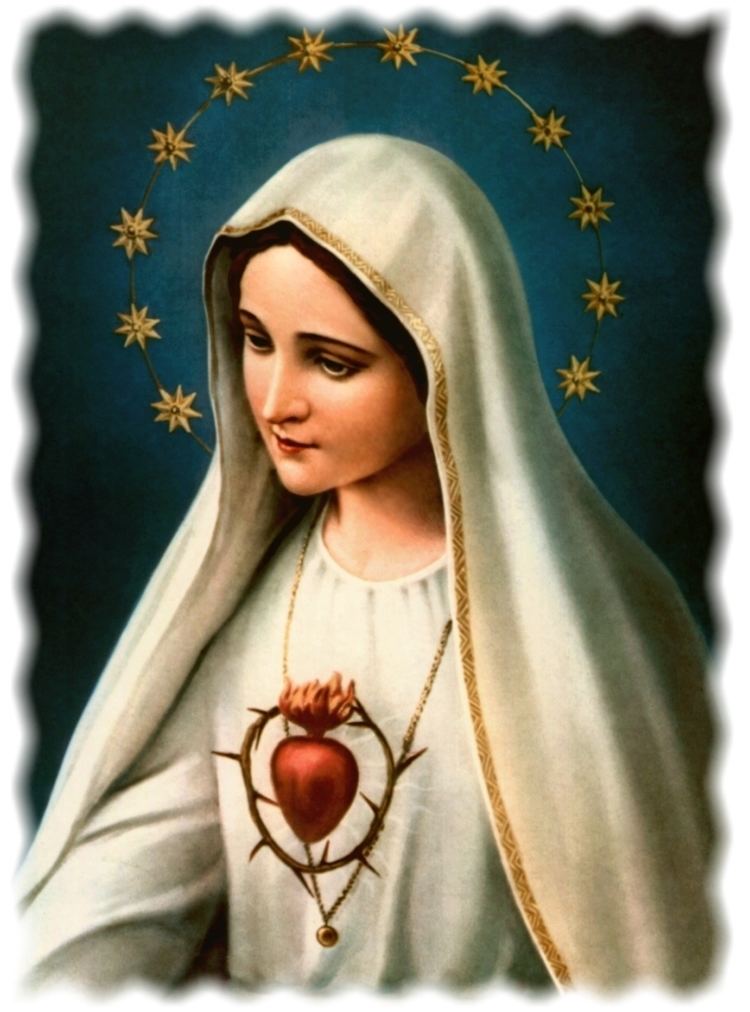
Prelude
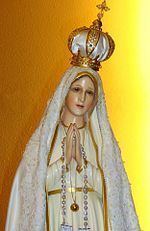
In the spring and summer of 1916, nine-year-old Lúcia Santos and her cousins Jacinta and Francisco Marto were herding sheep at the Cova da Iria near their home village of Fátima, Portugal. They later said they were visited three times by an apparition of an angel. They said the angel, who identified himself as "The Angel of Peace", taught them prayers, to make sacrifices, and to spend time in adoration of the Lord.
Marian apparitions
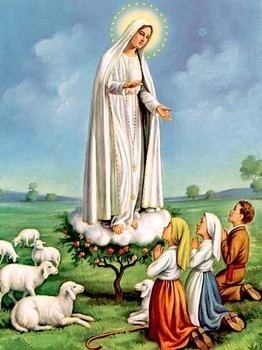
On 13 May 1917, the children saw a woman "brighter than the sun, shedding rays of light clearer and stronger than a crystal goblet filled with the most sparkling water and pierced by the burning rays of the sun." The woman wore a white mantle edged with gold and held a rosary in her hand. She asked them to devote themselves to the Holy Trinity and to pray "the Rosary every day, to bring peace to the world and an end to the war". While the children had never told anyone about seeing the angel, Jacinta told her family about seeing the brightly lit woman. Lúcia had earlier said that the three should keep this experience private. Jacinta's disbelieving mother told neighbors about it as a joke, and within a day the whole village knew of the children's vision.
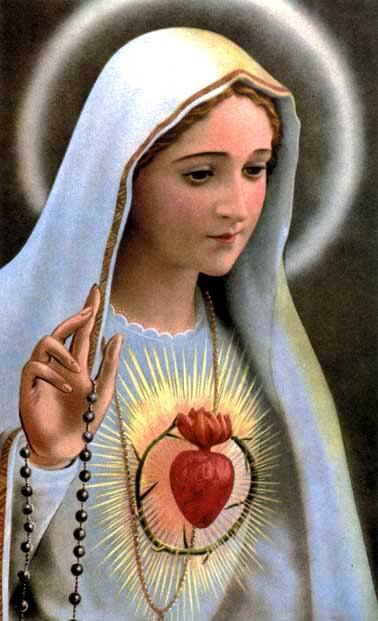
The children said the woman told them to return to the Cova da Iria on 13 June 1917. Lúcia's mother sought counsel from the parish priest, Father Ferreira, who suggested she allow them to go. He asked to have Lúcia brought to him afterward so that he could question her. The second appearance occurred on 13 June, the feast of St. Anthony, patron of the local parish church. On this occasion the lady revealed that Francisco and Jacinta would be taken to Heaven soon, but Lúcia would live longer in order to spread her message and devotion to the Immaculate Heart.
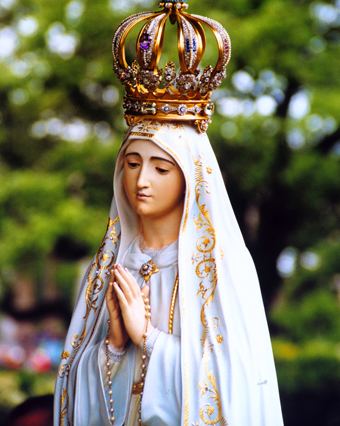
During the June visit, the children said the lady told them to say the Rosary daily in honor of Our Lady of the Rosary to obtain peace and the end of the Great War. (Three months earlier, on 21 April, the first contingent of Portuguese soldiers had embarked for the front lines of the war.) The lady also purportedly revealed to the children a vision of hell, and entrusted a secret to them, described as "good for some and bad for others". Fr. Ferreira later stated that Lúcia recounted that the lady told her, "I want you to come back on the thirteenth and to learn to read in order to understand what I want of you. ...I don't want more."
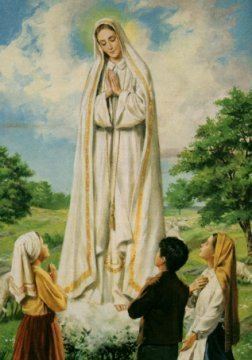
In the following months, thousands of people flocked to Fátima and nearby Aljustrel, drawn by reports of visions and miracles. On 13 August 1917, the provincial administrator Artur Santos (no relation to Lúcia Santos), intercepted, as he believed that these events were politically disruptive in the conservative country. He took the children into custody, jailing them before they could reach the Cova da Iria. Santos interrogated and threatened the children to get them to divulge the contents of the secrets. Lúcia's mother hoped the officials could persuade the children to end the affair and admit that they had lied. Lúcia told Santos everything short of the secrets, and offered to ask the woman for permission to tell the official the secrets.
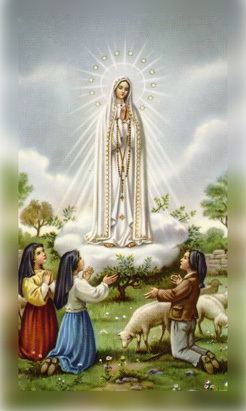
That month, instead of the usual apparition in the Cova da Iria on 13 August, the children reported that they saw the Virgin Mary on 19 August, a Sunday, at nearby Valinhos. She asked them again to pray the rosary daily, spoke about the miracle coming in October, and asked them "to pray a lot, a lot for the sinners and sacrifice a lot, as many souls perish in hell because nobody is praying or making sacrifices for them."

The three children claimed to have seen the Blessed Virgin Mary in a total of six apparitions between 13 May and 13 October 1917.
Miracle of the Sun
As early as July 1917, it was claimed that the Virgin Mary had promised a miracle for the last of her apparitions on 13 October, so that all would believe. What happened then became known as the "Miracle of the Sun". A huge crowd, variously estimated between 30,000 and 100,000, including newspaper reporters and photographers, gathered at Cova da Iria. The incessant rain had ceased and there was a thin layer of cloud.
Lúcia, seeing light rising from the lady's hands and the sun appearing as a silver disk, called out, "Look at the sun". She later had no memory of saying this. Witnesses later spoke of the sun appearing to change colors and rotate like a wheel. Witnesses gave widely varying descriptions of the "sun's dance." Poet Afonso Lopes Vieira and schoolteacher Delfina Lopes (with her students and other witnesses in the town of Alburita), reported that the solar phenomenon was visible up to 40 kilometers away. However, the phenomenon was not visible in other parts of the globe.
No movement or other phenomenon of the sun was recorded by scientists at the time. Not all witnesses reported seeing the sun "dance". Some people only saw the radiant colors, and others, including some believers, saw nothing unusual at all.
Various explanations have been advanced by scientists. Auguste Meessen, a professor at the Institute of Physics, Catholic University of Leuven, notes that looking directly at the sun is known to cause phosphene visual artifacts and temporary partial blindness. Meessen contends that retinal after-images produced after brief periods of sun gazing are a likely cause of the "dancing" effects, and the colour changes were caused by the bleaching of photosensitive retinal cells. Meessen observes that solar miracles have been witnessed in many places where people have been encouraged to stare at the sun. He cites the purported Marian apparitions at Heroldsbach, Bavaria, Germany (1949) as an example. More than 10,000 people reported having exactly the same optical effects as those at Fátima. Prof. Dr. Stöckl, a meteorologist from Regensburg, had also proposed a similar theory and made similar observations. Unlike Prof. Meessen, Dr. Stöckl hadn't seen "impressive colours," but had seen a dark blue disc almost covering the sun, which seemed to rotate.
Critics of such scientific explanations have been published by a company dedicated to defense of Christianity. They say that the crowd at Fátima was not encouraged to look at the sun until the alleged miracle was already underway; the children did not tell the crowd to expect a sun miracle. Additionally, people in towns up to forty kilometers away, who had no knowledge of the alleged supernatural events at Fátima, also reported seeing the phenomenon. The witness Joaquim Gregorio Tavares testified, "We were there while having in mind conversations we earlier had with cool-headed persons who were anticipating some changes of color in the sun." Madre Maria do Carmo, the daughter of a witness, claimed that in Alburitel, it was "anticipated that the miracle would involve the stars", and that on the morning of 13 October, "the people of Alburitel were darkening bits of glass by exposing them to candle-smoke so that they might watch the sun, with no harm to their eyes."
Additionally, at least two witnesses reported noticing colour changes before or simultaneously with looking at the sun. Four witnesses, Carlos Silva, José Maria de Proença de Almeida Garrett, Antonio de Paula and Manuel Gonçalves Junior, claimed to have looked away from the sun and still seen the landscape change colours. While de Almeida Garrett had been looking at the sun for some time before turning away, Gonçalves testified that "The eyes were fixed at the makeshift gate so that something extraordinary might be seen, and without looking at the sun on purpose, he noted that in the same moment when the people burst out in loud cries and exclamations, because of what was seen in the sun, both the people and the trees and everything within his view directed at that gate, took on different colors."
Some onlookers reported other phenomena, including luminous mist and showers of flower petals, which had been reported by the children during previous visitations.
While the crowd was staring at the sun, Lúcia, Francisco, and Jacinta said later they saw images of the Holy Family, Our Lady of Sorrows with Jesus Christ, and then Our Lady of Mount Carmel. They said they saw Saint Joseph and Jesus bless the people.
Later years of the children
Francisco and Jacinta Marto died in the international flu pandemic that began in 1918 and swept the world. Francisco Marto died at home on 4 April 1919, at the age of ten. Jacinta died at the age of nine in hospital on 20 February 1920. They are buried at the Sanctuary of Fátima. They were beatified by Pope John Paul II on 13 May 2000. Their mother Olímpia Marto said that her children predicted their deaths many times to her and to curious pilgrims in the brief period of time after the Marian apparitions.
At the age of fourteen, Lúcia was sent to the school of the Sisters of St. Dorothy (Dorothean) in Vilar, a suburb of Porto, Portugal. In 1928 she became a postulant at the convent of the Sisters of St. Dorothy in Tui, Spain, near the border with Portugal. Lúcia continued to report private visions periodically throughout her life. She reported seeing the Virgin Mary again in 1925 in the convent. This time she said she was asked to convey the message of the First Saturday Devotions. She said that a subsequent vision of Christ as a child reiterated this request. In 1929, Lúcia reported that Mary returned and repeated her request for the Consecration of Russia to her Immaculate Heart. She also reported an apparition in Rianxo, Galicia, in 1931, in which she said that Jesus visited her, taught her two prayers, and delivered a message to give to the church's hierarchy.
In 1936 and again in 1941, Sister Lúcia said that the Virgin Mary had predicted the deaths of her two friends during the second apparition on 13 June 1917. According to the Lúcia's 1941 account, on 13 June, Lúcia asked the Virgin if the three children would go to heaven when they died. She said that she heard Mary reply, "Yes, I shall take Francisco and Jacinta soon, but you will remain a little longer, since Jesus wishes you to make me known and loved on Earth. He wishes also for you to establish devotion in the world to my Immaculate Heart."
In 1947, Sister Lúcia left the Dorothean order. She joined the Discalced Carmelite Order in a monastery in Coimbra, Portugal. Lúcia died on 13 February 2005, at the age of 97.
Pilgrimage
An estimated 70,000 people assembled to witness the last of the promised appearances of the Lady in the Cova da Iria on 13 October 1917. The widely reported miracle of the sun contributed to Fátima quickly becoming a major centre of pilgrimage. Two million pilgrims visited the site in the decade following the events of 1917. A small chapel - the Capelinha - was built by local people on the site of the apparitions. The construction was neither encouraged nor hindered by the Catholic Church authorities.
On 13 May 1920, pilgrims defied government troops to install a statue of the Virgin Mary in the chapel. The Holy Sacrifice of the Mass was first officially celebrated there in January 1924. A hostel for the sick was begun in that year. In 1927 the first rector of the sanctuary was appointed, and a set of Stations of the Cross were erected on the mountain road. The foundation stone for the present basilica was laid the next year.
In 1930 the Catholic Church officially recognised the apparition events as "worthy of belief" and granted a papal indulgence to pilgrims visiting Fátima. In 1935 the bodies of the child visionaries, Jacinta and Francisco, were reinterred in the basilica. Pope Pius XII granted a Canonical Coronation of the statue of Our Lady of Fátima on 13 May 1946. This event drew such large crowds that the entrance to the site had to be barred.
In the 21st century, pilgrimage to the site takes place year round. Additional chapels, hospitals and other facilities have been constructed at the site. The principal pilgrimage festivals take place on the thirteenth day of each month, from May to October, on the anniversaries of the original apparitions. The largest crowds gather on 13 May and 13 October, when up to a million pilgrims have attended to pray and witness processions of the statue of Our Lady of Fátima, both during the day and by the light of tens of thousands of candles at night.
Official position of the Catholic Church
Private revelations do not form part of the deposit of faith of the Catholic Church, and its members are not bound to believe in any of them. (Assent may be given based on the discernment of the Church and its judgment that an apparition is probable and worthy of pious credence.) The reported visions at Fátima gathered widespread attention, as numerous pilgrims began to visit the site. After a canonical inquiry, the Bishop of Leiria-Fátima officially declared the visions of Fátima as "worthy of belief" in October 1930, officially permitting the cult of Our Lady of Fátima.
Political aspects
The devotion to Our Lady of Fátima in the Roman Catholic Church has a history of association with rightist and fascist groups. At the time of the apparitions, Portugal was undergoing tensions between the secularizing Republican government and more conservative elements in society. The Catholic opposition compared the actions of the Portuguese government to the contemporary actions of the Russian Bolsheviks, who led a socialist revolution in Russia. Later in Spain during the 1920s and 1930s, as the forces of the Republic gathered strength, armies of the faithful carried the Virgin Mary against groups they said were godless.
During the Spanish Second Republic, apparitions of the Virgin Mary were seen on Spanish soil at Ezquioga. Ramona Olazabal said that Mary had marked the palms of her hands with a sword. Seers gained much credence in Integrist and Carlist circles. The visions at Ezquioga were widely covered in the press, as were sixteen other visitations of the Virgin reported in 1931 in Spain. Conservative elements in the Spanish Church actively encouraged the Fátima devotion as a way of countering the perceived threat of atheistic Communism. In Portugal and its former colony of Brazil, right-wing groups were also strongly associated with the cult of Fátima. When Germany invaded Russia in 1941, some Catholics interpreted this in terms of the Fátima apparitions, and believed that the Virgin's prophecy was about to be fulfilled. Some joined the fight, enlisting in the Spanish Army's Blue Division that was engaged on the Eastern front.
The original apparitions took place during the six months preceding the Bolshevik revolution in Russia, and supposedly the Lady talked to the children about the need to pray for Russia. Lucia admitted later that the children initially thought she was requesting prayers for a girl named Russia. In the first edition of Sister Lúcia’s memoirs, published after the outbreak of WW II, she focused on the issue of Russia. The warning by the Lady that "if Russia was not consecrated, it would spread its errors throughout the world" was often seized upon as an anti-communist rallying cry.
The Blue Army of Our Lady of Fátima, for instance, has always been strongly anti-Communist and its members often associated the Fátima story in the context of the Cold War. The Blue Army is made up of Catholics and non-Catholics who believe that by dedicating themselves to daily prayer (specifically, of the Rosary), they can help to achieve world peace and put an end to the error of communism. Organizations such as the Blue Army have gained the approval of the Catholic Church. Other groups, such as the International Fátima Rosary Crusade led by Fr. Nicholas Gruner, have interpreted the message of Fátima in such a fashion that they have been censured by the Church. These groups are generally opposed not just to Communism, but to the developments in Roman Catholicism from the Second Vatican Council.
Memoirs
The Fátima story developed in two parts: that which was reported in 1917, and information later mentioned in Sr. Lúcia's memoirs which she wrote years later. She wrote years after the Church ruled that the events in Fátima were "worthy of belief." Her memoir was not subject to the same scrutiny. The early messages focused on the need to pray the rosary for peace and an end to World War I.
The events in Fátima were not widely known outside Spain and Portugal until Lúcia published her memoirs, starting in the late 1930s. Between 1935 and 1993, she wrote six memoirs. The first four, written between 1935 and 1941 during World War II, is now published under the title Fátima in Lúcia's Own Words. The fifth and six memoirs, written in 1989 and 1993, are published as Fátima in Lúcia's Own Words II.
In the mid-1930s the Bishop of Leiria encouraged Lúcia (now Sister Maria Lúcia das Dores) to write her memoirs, so that she might reveal further details of the 1917 apparitions. In her first memoir, published in 1935, focused on the holiness of Jacinta Marto. The deceased girl was by then popularly considered a saint. In her second memoir, published in 1937, Lucia wrote more about her own life, the apparition of 13 June 1917, and first reveals the earlier apparitions of the Angel of Peace.
Three Secrets of Fátima
In her third memoir of 1941, Sister Lúcia described three secrets. She said these had been entrusted to the children during the apparition of 13 July 1917.
First secret
This was a vision of hell, which Lúcia said they experienced on 13 July 1917.
Second secret
This was a recommendation for devotion to the Immaculate Heart of Mary as a way to save souls and bring peace to the world. It predicted an end to the Great War, but predicted a worse one if people did not cease offending God. This second war would be presaged by a night illuminated by an unknown light, as a "great sign" that the time of chastisement was near. To avert this, Mary would return to ask for the consecration of Russia to the Immaculate Heart, and the establishment of the First Saturday Devotions. If her requests were heeded, Russia would be converted, and there would be peace; if not, Russia would spread her errors throughout the world, causing wars and persecutions of the Church. It ended with a promise that in the end, the Immaculate Heart would triumph. The Holy Father would consecrate Russia to Mary, and a period of peace would be granted to the world."
On 25 January 1938 (during solar cycle 17), bright lights, an aurora borealis appeared over the northern hemisphere, including in places as far south as North Africa, Bermuda and California. It was the widest occurrence of the aurora since 1709 and people in Paris and elsewhere believed a great fire was burning and fire departments were called. Sister Lúcia indicated that it was the sign foretold and so apprised her superior and the bishop in letters the following day. Just over a month later, Hitler seized Austria and eight months later invaded Czechoslovakia.
Consecration of Russia
According to Sister Lúcia, the Virgin Mary promised that the Consecration of Russia would lead to Russia's conversion and an era of peace.
Pope Pius XII, in his Apostolic Letter Sacro Vergente of 7 July 1952, consecrated Russia to the Blessed Virgin Mary. Pius XII wrote,
Just as a few years ago We consecrated the entire human race to the Immaculate Heart of the Virgin Mary, Mother of God, so today We consecrate and in a most special manner We entrust all the peoples of Russia to this Immaculate Heart...In 1952 the Pope said to the Russian people and the Stalinist regime that the Virgin Mary was always victorious. "The gates of hell will never prevail, where she offers her protection. She is the good mother, the mother of all, and it has never been heard, that those who seek her protection, will not receive it. With this certainty, the Pope dedicates all people of Russia to the immaculate heart of the Virgin. She will help! Error and atheism will be overcome with her assistance and divine grace."
Popes Pius XII and John Paul II both had a special relationship with Our Lady of Fátima. Pope Benedict XV began Pacelli's church career, elevating him to archbishop in the Sistine Chapel on 13 May 1917, the date of the first reported apparition. Pius XII was laid to rest in the crypt of Saint Peter's Basilica on 13 October 1958, the Feast of Our Lady of Fátima.
Pope John Paul II again consecrated the entire world to the Virgin Mary in 1984, without explicitly mentioning Russia. Some believe that Sister Lúcia verified that this ceremony fulfilled the requests of the Virgin Mary. However, in the Blue Army's Spanish magazine, Sol de Fátima, in the September 1985 issue, Sister Lúcia said that the ceremony did not fulfill the Virgin Mary's request, as there was no specific mention of Russia and "many bishops attached no importance to it." In 2001, Archbishop Tarcisio Bertone met with Sister Lúcia, who reportedly told him, "I have already said that the consecration desired by Our Lady was made in 1984, and has been accepted in Heaven." Sister Lúcia died on 13 February 2005, without making any public statement of her own to settle the issue.
Some maintain that, according to Lúcia and Fátima advocates such as Abbé Georges de Nantes, Fr. Paul Kramer and Nicholas Gruner, Russia has never been specifically consecrated to the Immaculate Heart of Mary by any Pope simultaneously with all the world's bishops, which is what Lúcia in the 1985 interview had said Mary had asked for.
However, by letters of 29 August 1989 and 3 July 1990, she stated that the consecration had been completed; indeed in the 1990 letter in response to a question by the Rev. Father Robert J. Fox, she confirmed:
I come to answer your question, "If the consecration made by Pope John Paul II on 25 March 1984 in union with all the bishops of the world, accomplished the conditions for the consecration of Russia according to the request of Our Lady in Tui, Spain on 13 June 1929?" Yes, it was accomplished, and since then I have said that it was made.
And I say that no other person responds for me, it is I who receive and open all letters and respond to them.
In the meantime, the conception of Theotokos Derzhavnaya, Orthodox Christian venerated icon, points out that Virgin Mary is considered actual Tsarina of Russia by the religious appeal of Nicholas II; thus "Consecration of Russia" may refer to return of Russian monarchy. The icon was brought to Fátima in 2003 and 2014, together with another significant icon, the Theotokos of Port Arthur.
Third Secret
The third secret, a vision of the death of the Pope and other religious figures, was transcribed by the Bishop of Leiria and reads:
"After the two parts which I have already explained, at the left of Our Lady and a little above, we saw an Angel with a flaming sword in his left hand; flashing, it gave out flames that looked as though they would set the world on fire; but they died out in contact with the splendour that Our Lady radiated towards him from her right hand: pointing to the earth with his right hand, the Angel cried out in a loud voice: ‘Penance, Penance, Penance!' And we saw in an immense light that is God: ‘something similar to how people appear in a mirror when they pass in front of it' a Bishop dressed in White ‘we had the impression that it was the Holy Father'. Other Bishops, Priests, Religious men and women going up a steep mountain, at the top of which there was a big Cross of rough-hewn trunks as of a cork-tree with the bark; before reaching there the Holy Father passed through a big city half in ruins and half trembling with halting step, afflicted with pain and sorrow, he prayed for the souls of the corpses he met on his way; having reached the top of the mountain, on his knees at the foot of the big Cross he was killed by a group of soldiers who fired bullets and arrows at him, and in the same way there died one after another the other Bishops, Priests, Religious men and women, and various lay people of different ranks and positions. Beneath the two arms of the Cross there were two Angels each with a crystal aspersorium in his hand, in which they gathered up the blood of the Martyrs and with it sprinkled the souls that were making their way to God."Controversy around the Third Secret
Lúcia declared that the Third Secret could be released to the public after 1960. Some sources, including Canon Barthas and Cardinal Ottaviani, said that Lúcia insisted to them it must be released by 1960, saying that, "by that time, it will be more clearly understood", and, "because the Blessed Virgin wishes it so." Instead, in 1960 the Vatican published an official press release stating that it was "most probable the Secret would remain, forever, under absolute seal." This announcement triggered widespread speculation. According to the New York Times, speculation over the content of the secret ranged from "worldwide nuclear annihilation to deep rifts in the Roman Catholic Church that lead to rival papacies."
The Vatican did not publish the Third Secret, a four-page, handwritten text, until 26 June 2000.
Such writers as Father Paul Kramer, Christopher Ferrara, Antonio Socci, and Marco Tosatti have suggested that this was not the full text of the secret and stating the Third Secret is not the full text. They alleged that Cardinals Bertone, Ratzinger and Sodano concealed the existence of another one-page document, containing information about the Apocalypse and a great apostasy.
The Vatican has maintained its position that the full text of the Third Secret was published. According to a December 2001 Vatican press release (published in L'Osservatore Romano), Lúcia told then-Archbishop Bertone in an interview that the secret had been completely revealed when published.
During his apostolic visit to Portugal during 11–14 May 2010 on the 10th anniversary of the beatification of Jacinta and Francisco Marto, Pope Benedict XVI explained to reporters that the interpretation of the third secret did not necessarily refer to the attempted assassination of Pope John Paul II in Saint Peter's Square in 1981. He said that the third secret, "has a permanent and ongoing significance," and that, "its significance could even be extended to include the suffering the Church is going through today as a result of the recent reports of sexual abuse involving the clergy."
Fátima prayers and reparations
Many Roman Catholics recite prayers based on Our Lady of Fátima. Lúcia later said that, in 1916, she and her cousins had several visions of an angel calling himself the "Angel of Portugal" and the "Angel of Peace," who taught them to bow with their heads to the ground and to say "My God, I believe, I adore, I hope, and I love you. I ask pardon for those who do not believe, do not adore, do not hope and do not love you." Lúcia later set this prayer to music and a recording exists of her singing it. It was also said that sometime later, the angel returned and taught them a eucharistic devotion now known as the Angel Prayer.
Lúcia said that the Lady emphasized Acts of Reparation and prayers to console Jesus for the sins of the world. Lúcia said that Mary's words were, "When you make some sacrifice, say 'O Jesus, it is for your love, for the conversion of sinners, and in reparation for sins committed against the Immaculate Heart of Mary.'" At the apparition of 13 July 1917, Lucia said Mary told the children that sinners could be saved from damnation by devotion to the Immaculate Heart, but also by making "sacrifices". They heard her repeat the idea of sacrifices several times. Her vision of hell prompted them to ever more stringent self-mortifications to save souls. Among many other practices, Lúcia wrote that she and her cousins wore tight cords around their waists, flogged themselves with stinging nettles, gave their lunches to beggars, and abstained from drinking water on hot days. Francisco and Jacinta became extremely devoted to this practice. Lúcia wrote that Mary said God was pleased with their sacrifices and bodily penances.
At the first apparition, Lúcia wrote, the children were so moved by the radiance that they involuntarily said "Most Holy Trinity, I adore you! My God, my God, I love you in the Most Blessed Sacrament." Lúcia also said that she heard Mary ask for the following words to be added to the Rosary after the Gloria Patri prayer: "O my Jesus, pardon us, save us from the fires of hell. Lead all souls to heaven, especially those in most need."
According to Vatican teaching on the tradition of Marian visitations, references to the "conversion of sinners" do not necessarily mean religious conversion to the Roman Catholic Church. Pope Leo XIII, in his encyclical on the "Unity of the Church, Satis Cognitum", said that would mean the "conversion of heretics or apostates who are 'outside the church and alien to the Christian Faith.' Rather, "conversion of sinners" refers to general repentance and an attempt to amend one's life according to the teachings of Jesus for those true Catholics who are fallen into sins. Lúcia wrote that she and her cousins defined "sinners" not as non-Catholics but as those who had fallen away from the church or, more specifically, willfully indulged in sinful activity, particularly "sins of the flesh" and "acts of injustice and a lack of charity towards the poor, widows and orphans, the ignorant and the helpless," which she said were even worse than sins of impurity.
Popes and Fátima
The cultus of the Immaculate Heart is the central message of Fátima. Ecclesiastical approbation does not imply that the Church provides an infallible guarantee on the supernatural nature of the event. But, Karl Rahner and other theologians have said that popes, by authoritatively fostering the Marian veneration in places such as Fátima and Lourdes, motivate the faithful into an acceptance of divine faith.
In October 1930 Bishop da Silva declared that the apparitions at Fátima were "worthy of belief," and approved public devotion to the Blessed Virgin under the title Our Lady of Fátima. The Vatican granted indulgences and permitted special Liturgies of the Mass to be celebrated in Fátima.
In 1939, Eugenio Pacelli, who was consecrated as a bishop on 13 May 1917 — the day of the first apparition — was elected to the papacy as Pius XII. He is considered to have become "the Pope of Fátima." In 1940 after World War II had started, Sister Lúcia asked Pope Pius XII to consecrate the world and Russia to the Immaculate Heart of Mary. She repeated this request later that year on 2 December 1940, stating that in the year 1929, the Blessed Lady requested in another apparition that Russia be consecrated to her Immaculate Heart. Mary was said to promise the conversion of Russia from its errors.
On 13 May 1942, the 25th anniversary of the first apparition and the silver jubilee of the episcopal consecration of Pope Pius XII, the Vatican published the "Message and Secret of Fátima." On 31 October 1942, Pope Pius XII, in a radio address to the people of Portugal, discussed the apparitions of Fátima and consecrated the human race to the Immaculate Heart of the Virgin, with specific mention of Russia. (See below) On 8 December 1942, the Pontiff officially and solemnly declared this consecration in a ceremony in Saint Peter's Basilica in Rome.
On 13 May 1946, Cardinal Masalla, the personal delegate of Pius XII, crowned in his name Our Lady of Fátima, as the Pope issued a second message about Fátima:
On 1 May 1948, in Auspicia quaedam, Pope Pius XII requested the consecration to the Immaculate Heart of every Catholic family, parish and diocese.
On 18 May 1950, the Pope again sent a message to the people of Portugal regarding Fátima: "May Portugal never forget the heavenly message of Fátima, which, before anybody else she was blessed to hear. To keep Fátima in your heart and to translate Fátima into deeds, is the best guarantee for ever more graces". In numerous additional messages, and in his encyclicals Fulgens corona (1953), and Ad Caeli Reginam (1954), Pius XII encouraged the veneration of the Virgin in Fátima.
At the end of the Second Vatican Council, Pope Paul VI renewed the consecration of Pius XII to the Immaculate Heart of Mary. In an unusual gesture, he announced his own pilgrimage to the sanctuary on the fiftieth anniversary of the first apparition. On 13 May 1967, he prayed at the shrine together with Sister Lúcia. Pope John Paul II credited Our Lady of Fátima with saving his life following an assassination attempt on 13 May, 1981, the Feast of Our Lady of Fátima. On 12 May 1987, he expressed his gratitude to the Virgin Mary for saving his life. The following day, he renewed the consecration of Pius XII to the Immaculate Heart of the Virgin.
On 12–13 May 2010, Pope Benedict XVI visited the Sanctuary of Our Lady of Fátima and strongly stated his acceptance of the supernatural origin of the Fátima apparitions. On the first day, the Pope arrived at the Chapel of Apparitions to pray; he gave a Golden Rose to Our Lady of Fátima "as a homage of gratitude from the Pope for the marvels that the Almighty has worked through you in the hearts of so many who come as pilgrims to this your maternal home". The Pope also recalled the "invisible hand" that saved John Paul II. He said in a prayer to the Blessed Virgin Mary that "it is a profound consolation to know that you are crowned not only with the silver and gold of our joys and hopes, but also with the 'bullet' of our anxieties and sufferings."
On the second day, Pope Benedict spoke to more than 500,000 pilgrims; he referred to the Fátima prophecy about the triumph of the Immaculate Heart of Mary and related it to the final "glory of the Most Holy Trinity."
Pius XII, Paul VI, John Paul II and Benedict XVI all voiced their acceptance of the supernatural origin of the Fátima events.
Sainthood
In March 2017 the Holy See announced that Pope Francis will canonize two of the visionaries, Jacinta and Francisco, on 13 May at a Mass in Fatima during a two day visit. The decision followed papal confirmation of a miracle attributed to the intercession of the two visionaries.
Other images of Our Lady of Fátima
Several statues of Our Lady of Fátima are notable, among which are the following:
